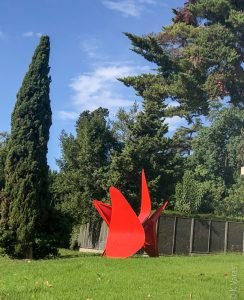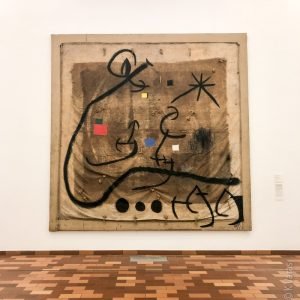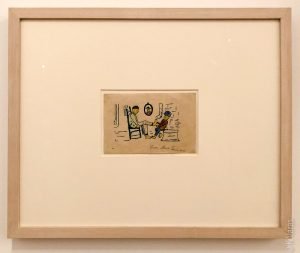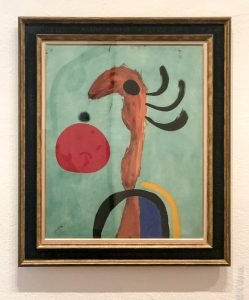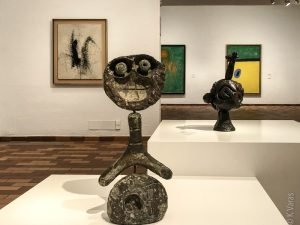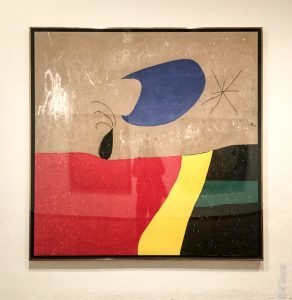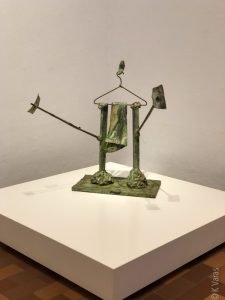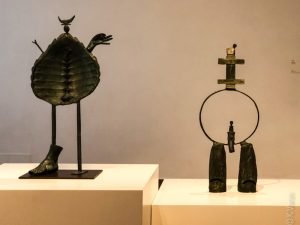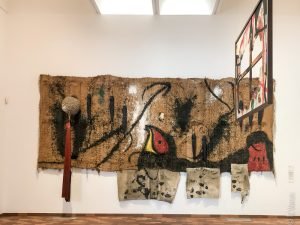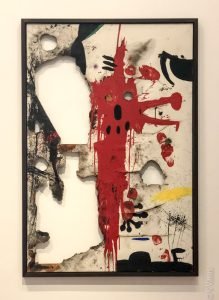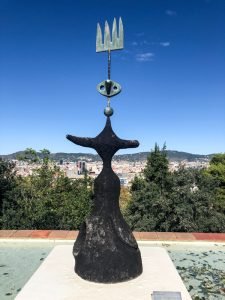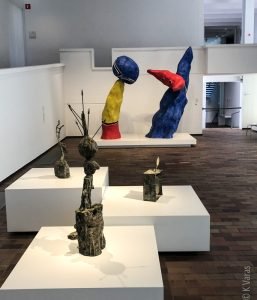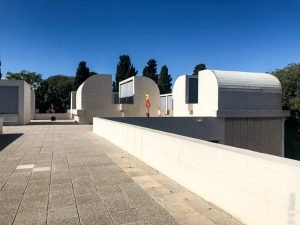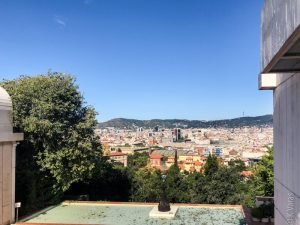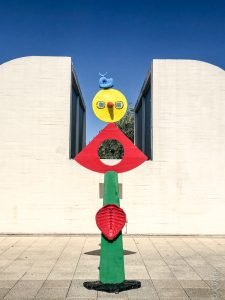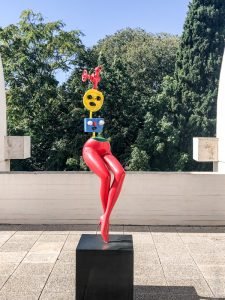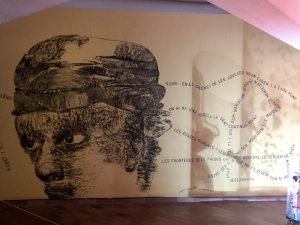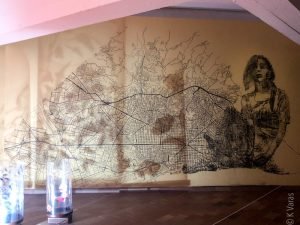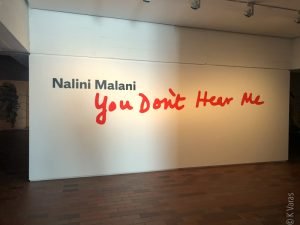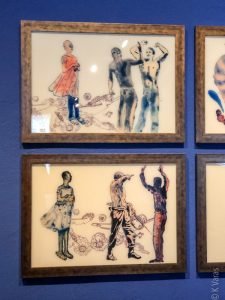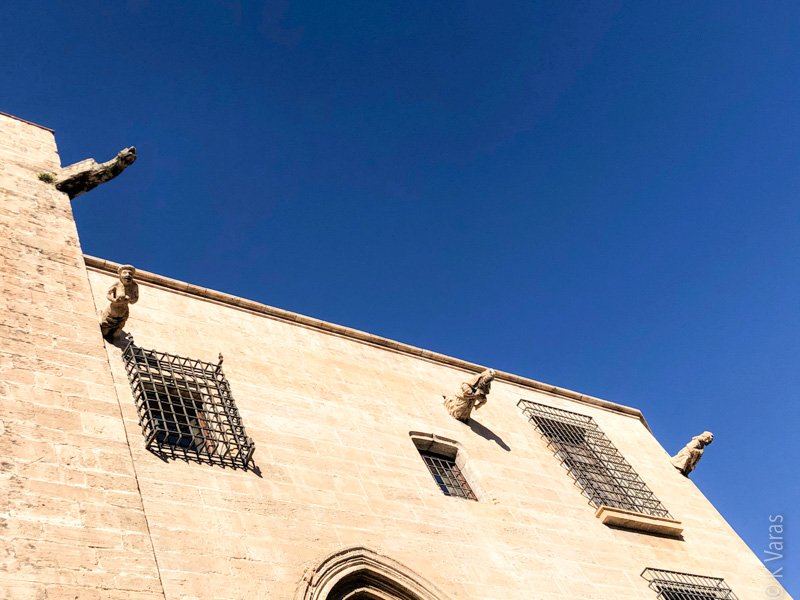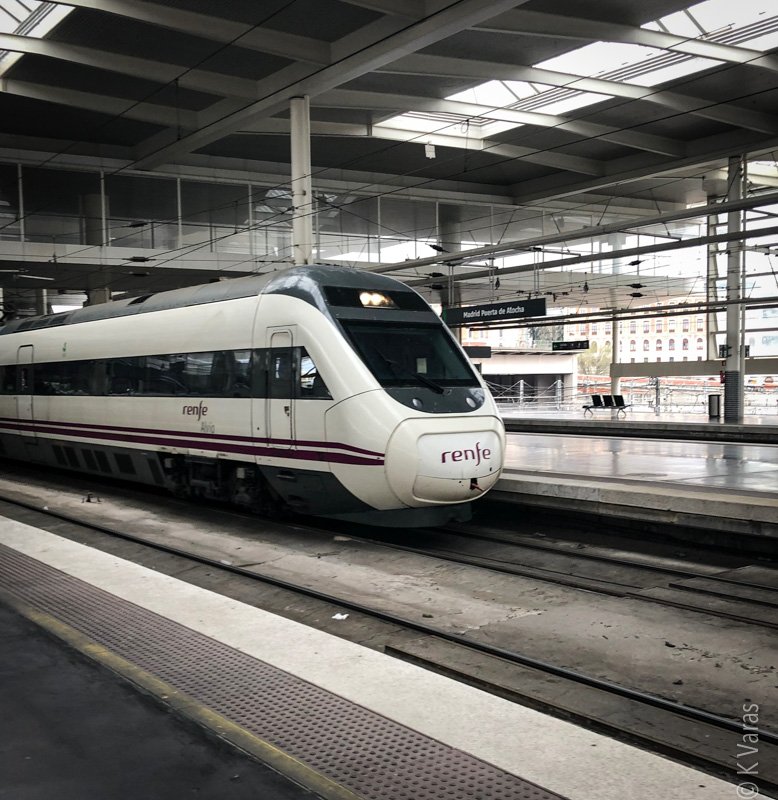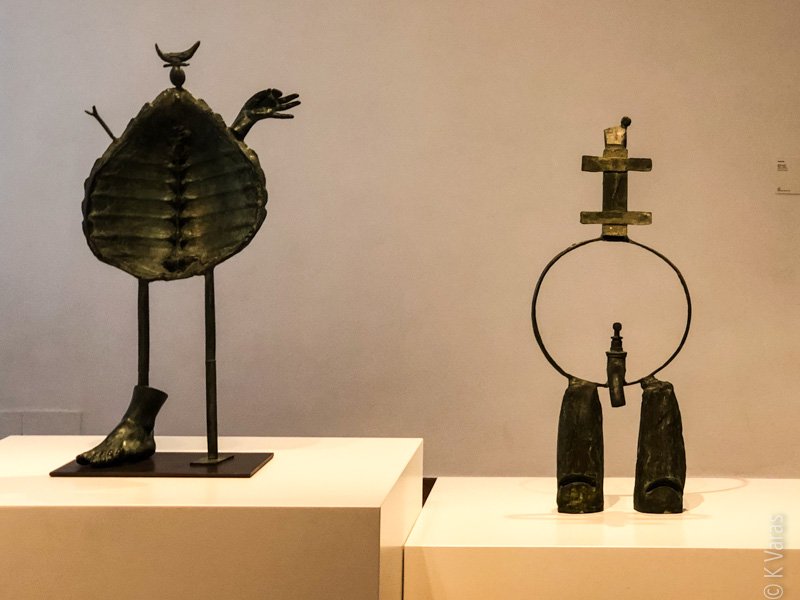
Fundació Joan Miró
When you visit Catalunya, you simply can’t miss the works of Joan Miró, the famous Spanish painter, sculptor, and ceramist whose works are on display all over Barcelona, his home town. Just as with Picasso, Matisse, or Gaugin, Miró’s works are instantly recognizable: they have a childlike simplicity, in colour and in form. Miró used everyday objects in his art and found a way to tell stories in very unique ways. What I love most about his art is colour. I don’t think there have been many famous artists who used primary colours quite so effectively, to be honest. It’s really not difficult to like.
Fundació Joan Miró is one of two major museums dedicated to his art: this one in Barcelona and another in Palma de Mallorca, his adoptive city. The museum itself is located on Montjuïc hill, and can be reached via the Montjuïc Funicular, which is a fun way to scale the hill. I arrived by metro at station Paral-lel and promptly made a grave error. Instead of reading the signs inside the station, I went outside to find the funicular. Unfortunately for me (as it cost me an extra trip), the entrance was in a hidden (to me) tunnel just off the platform I originally got off on. There is a post to be written one day on the lack of signage and useful communication in this country! Anyway, I did finally locate the proper place where I was rather surprised that everyone who was getting on board went to the higher cabins of the funicular while I sat, alone, in the bottom one. I kept thinking “what do they know that I don’t?” Fortunately, I did eventually get joined by a couple of older ladies, and once the funicular took off, I was glad to be able to see out, something I doubt I would have been able to do from a higher cabin. I then realized, when we got to the top, why everyone was using the ramp to go to higher cabins at the bottom station: at the top station there were stairs, albeit not many, but quite large, and they were much harder to walk up than a ramp would have been, especially if you have bad knees. The old ladies were cursing a little as well, I’m sure of it. It may be that the bottom cabin is for lazy or late people and then they pay the price at the top. The things I learn daily!

The museum itself is very close to the funicular, only a few steps away. The building is dedicated not only to Miró but also contemporary art in general, and its architecture reflects that as well. It’s a white, irregular, and modern structure nestled among trees on the side of the hill, under an incredibly blue sky. In the front of it stand a couple of Miró’s sculptures, setting the tone right from the start. I arrived a few minutes early and there were a few people waiting already but soon half of them left as they seemed to be in a group using the area as a backdrop for a photoshoot; I ended up spying on them from within the museum a few times during my visit. As elsewhere, Covid-19 did me a great favour by keeping other visitors away so I only had to contend with a handful of fellow art lovers and not the usual crowds.

Confession: I had been aware of Miró’s art, of course, since any visitor to Barcelona must, but I had never spent time really enjoying it before. I got my fill now! As I mentioned earlier, I love colour and there was plenty of it. I particularly loved the sculptures on the roof; they were so cleverly positioned you couldn’t help but smile every time one popped up. The roof had another plus: the view! There probably isn’t an elevated spot in Barcelona from which the view is bad, but when you add art to the mix … wow!

Joan Miró was a Surrealist, with a twist, or, more correctly, his own personal style. His interest was in the subconscious and the internal, which probably explains why his works often evoke the inner child. He had much scorn towards traditional painting methods and enjoyed doing things his way, while at he same time expressing his deep Catalunyan pride, a common theme among artists from this part of Spain. Besides colour, what I really love about his works is his use of texture and the myriad of materials put together in unexpected ways. This hanging, for example, is enormous! It fills the whole 2-story high wall, but when you get really close, you can see the detail and depth of the weaving. It’s simply beautiful. A close-up photo is in the Gallery and the bit you can see in the close-up was roughly at the level of my head — that’s your size reference; I think I reached about a quarter of it, if that.

As in most museums, there was also a temporary exposition, this time dedicated to the art of Nalini Malani, a contemporary Indian artist. I found parts of it quite disturbing and not really to my taste at all, but the one part I did like had an interesting connection to my roots. One of the exhibit rooms contained large maps of Barcelona, with rotating glass containers with images in them, resulting in interesting shadows dancing on the walls. The cool part was the voiceover which, once I started paying attention, I realized was in English. It was the poem Mapa by Wisława Szymborska, the famous Polish poet, and the words on the wall were a Catalan translation of that poem. It was really quite beautiful.
In the end, I was very glad I finally made the trip to Fundació Joan Miró — it was totally worth getting lost in the metro and I’d love to go back again. Since it was the weekend of La Mercé in Barcelona, drawn by sounds of music in the park, I continued my exploration of Parc Montjuïc … but more about that in the next post.




